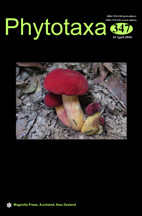Abstract
We endorse the tribal status of Cryptangieae and discuss its most probable sister-group based on phylogenetic analyses using rbcL, trnL-trnL-trnF and ITS sequences. Cryptangieae were poorly sampled in previous molecular phylogenies of Cyperaceae: only three of about 50 species were sampled and all of them are currently included in the genus Lagenocarpus. We gathered more data about the tribe to verify its monophyletic status and to clarify the relationships among the tribes of subfamily Cyperoideae. Here we present a phylogeny with 18 species of Cryptangieae including all three currently recognized genera. Cryptangieae appears as monophyletic with great support in our Maximum Parsimony and Bayesian Inference analyses based on single and combined matrices. We emphasize the need for morphological, molecular and biogeographical data to achieve a broadly supported interpretation of the early divergent taxa of subfamily Cyperoideae.

